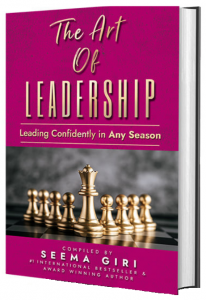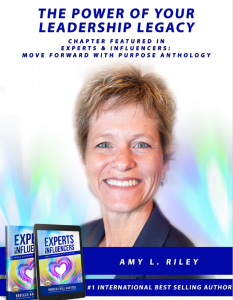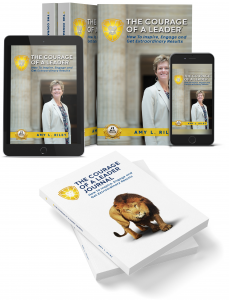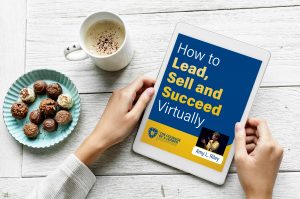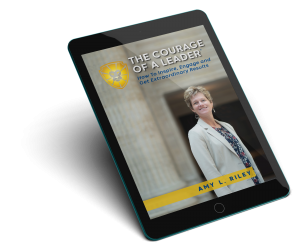My guest today is Larry Durham, and he is a thought leader. He is a visionary in the fields of enterprise learning and talent development. In this episode, Larry and I discuss tactics to stay competitive in our rapidly changing world and we explore how to Intentionally Disrupt Before You Are Disrupted.
About the Guest:
Larry is a visionary in the fields of enterprise learning and talent development. Over the last 25 years, he has worked with many Fortune 500 companies to co-create innovative talent development solutions that yield measurable business outcomes. In the implementation, Larry is highly regarded for his ability to manage complex strategic transformation initiatives. His experience spans many industries, including technology, pharmaceuticals, financial services, telecommunications, media, hotel and leisure, utilities and energy, and retail and consumer.
As Managing Partner at St. Charles Consulting Group, Larry invests the majority of his time managing key client relationships. He also develops thought leadership on the future of organizational learning and helps create innovative solutions for St. Charles’ clients.
https://www.linkedin.com/in/larrydurham/
About the Host:
Amy L. Riley is an internationally renowned speaker, author and consultant. She has over 2 decades of experience developing leaders at all levels. Her clients include Cisco Systems, Deloitte and Barclays.
As a trusted leadership coach and consultant, Amy has worked with hundreds of leaders one-on-one, and thousands more as part of a group, to fully step into their leadership, create amazing teams and achieve extraordinary results.
Amy’s most popular keynote speeches are:
The Courage of a Leader: The Power of a Leadership Legacy
The Courage of a Leader: Create a Competitive Advantage with Sustainable, Results-Producing Cross-System Collaboration
The Courage of a Leader: Accelerate Trust with Your Team, Customers and Community
The Courage of a Leader: How to Build a Happy and Successful Hybrid Team
Her new book is a #1 international best-seller and is entitled, The Courage of a Leader: How to Inspire, Engage and Get Extraordinary Results.
https://www.linkedin.com/in/amyshoopriley/
Call to action
How can you intentionally disrupt yourself, your team and your work?
Thanks for listening!
Thanks so much for listening to The Courage of a Leader podcast! If you got inspired and/or got valuable leadership techniques you can use from this episode and think that others could benefit from listening, please share using the social media buttons on this page.
Do you have questions or feedback about this episode? Leave a comment in the section below!
Subscribe to the podcast
If you would like to get automatic updates of new The Courage of a Leader podcast episodes, you can subscribe to the podcast on Apple Podcasts. You can also subscribe in your favorite podcast app.
Leave us an Apple Podcasts review
Ratings and reviews from our listeners are extremely valuable to us and greatly appreciated. They help our podcast rank higher on Apple Podcasts, which helps us ignite The Courage of a Leader in more leaders! Please take a minute and leave an honest review on Apple Podcasts.
Transcript
My guest today, Larry Durham is a thought leader. He's a visionary in the fields of enterprise learning and talent development. In this episode, Larry and I discussed tactics to stay competitive in our rapidly changing world, and we explore how to intentionally disrupt before you are disrupted. I'm glad you're here to listen in.
Amy Riley:Welcome to the Courage of a Leader podcast. This is where you hear real life stories of top leaders achieving extraordinary results. And you get practical advice and techniques, you can immediately apply for your own success. This is where you will get inspired. And take bold, courageous action. I am so glad you can join us. I'm your host, Amy Riley. Now, are you ready to step into the full power of your leadership and achieve the results you care about most? Let's ignite the courage of a leader.
Larry Durham:The idea that developing your technical skills in a fast paced world requires leaders, you can't just say, well, 30 years ago, we used to do it this way, you've got to be on the leading edge of understanding because it's that element of vision that you always articulated for your employees before is has never been more important, important than it is now. The art of the possible of where your industry is going where your business is going. Because if not, you know, if you're not growing, you probably are dying as a business. And you've got to think of new and innovative ways that those things are coming together.
Amy Riley:Yes. In this volatile, ambiguous, complex, VUCA world that we're in right now. Right? Yeah, like, like vision, any pieces of clarity that we can have about where we're headed? Give folks something to grab on to? Yeah,
Larry Durham:and I think it's funny you say that, because we wrote an article a couple years ago on Buka. This is this is like hyper hyperspeed VUCA, you know, where all of a sudden, it's like, you know, what does that mean? Who would have guessed that you can't come into the office and everything is virtual. And so that just amplifies or potentially complicates the way you do your work. So to manage VUCA, but you can't see your people or you can't eat with them as you used to as a whole new dimension. And I think that's a whole nother topic of coaching and managing teams. In a completely virtual environment. It requires a totally different skill set. You know, I used to talk to someone when they walked by my office now all of a sudden, no one walked by your office. And so you've got to be intentional, which for most leaders, you know, it's hard to find the time to do that. But that's a whole new thing. A whole new way of thinking about developing and coaching.
Amy Riley:Mm hmm. Yes. As you started saying that intentional was the word that popped into my mind as well, like thinking about what organically happened when we were all together in the office. And now how do you intentionally create some version of that?
Larry Durham:. Yes. Adding on top of there:Amy Riley:Yes. Yes. I feel it. I feel in every conversation I'm having with leaders these days. And it's part of why I want to do what I do because I want to support the Leaders, they've got stuff coming at them in in all directions. And it's tactical and its strategic and its relationship building and thinking about individuals and thinking about teams and thinking about cost. I don't know, I presume
Larry Durham:that this will probably, there's always a technology element to be had. Now, I'm a fan of saying that technology is not a solution. But it can be a catalyst or an enabler. And it's interesting recently, this is an aside, but you know, I was using my Outlook 365, I go into my Outlook, or office 365. And I go into Outlook, and there's a great new tool, Microsoft, viva, yes, uses artificial intelligence, and it says, Do you want to block time for learning, you want to block time for meeting? Oh, by the way, here's what you have coming up, here's the document you need. I personally think there will be technology that says, As a leader, I see that you haven't reached out to me, in four weeks, you haven't had a meeting, and I don't see any phone calls, I don't see text, might want to send one. This is very impersonal. Maybe you start with this. And I think the automation of perceived engagement is probably something that would prompt the healthier, more dynamic, because a lot of it is perception. You know, here's my leader thinking about me, am I are we engaging? Are we having conversations, and sometimes that that automation, that technology to help, you know, we've had CRM for a long time, you know, maybe there's an E RM that needs to be put in place to really create connection and engagement? I absolutely think that's probably on the horizon.
Amy Riley:Yeah, yeah. Yeah, many leaders probably need that ping. coming in.
Larry Durham:I know I do. I need a hammer more than a ping. But
Amy Riley:yeah, I'm with you. expanded the team this year. And I felt it earlier this week. I'm like, Oh, I've got to touch base with him. We haven't talked recently enough. I feel it. Cool. So, Larry, you are about supporting organizations to transform to become learning organizations, innovative talent, development. All of that requires these leaders that are managing many things like we've been talking about, to think and act in new ways. How do leaders disrupt themselves disrupt those around them in order to think and act in new ways?
Larry Durham:Great question. You know, there's so many parts to that question. When I think about, I think the first step is this, understanding how the economy and the industry and our organization is changing. Every organ organization has been affected, no matter what it is either pandemic, or the economy, new ways of working new skills. We've said this for a long time, though, shelf life of skills is shortening. And so what we're seeing among most of our clients is first this and that is, you know, don't disassociate learning and development, from the day to day work. It is a catalyst, it's an enabler, and it's critical to actually bring those things together. So step one is if leaders are not already thinking about bringing, learning in the flow of work, learning in the flow of business, learning at the point of need, you know, having been around for a long time, when you say training, individuals and leaders say, Oh, yes, that's where I go to complete my past my my CPE my compliance, and it can be a checkbox mentality, when in reality, creating a culture where individuals see learning as the lifeblood of being able to do what you do and innovate and collaborate and advance. It's critical. So I think number one for leaders is to understand how learning and the flow of work can be. And that could be something as simple as what the military has done for a long time after action reviews to say, what did we learn in this process, good, bad or otherwise? And then codify that and share that to accelerate how that works. So that's, that's the first thing I see amongst leaders is really appreciating the learning and the flow of work. I think the other outside of developing themselves as a good leader, which is important and I'll talk about that is really educating themselves on where the marketplace in our industry is going. There is no industry that's immune I'm accelerating and advancing quickly into new ways of working. And so what does that look like? For some it may be if they're in the healthcare space, what does the acceleration of vaccines look like? And what's the implications of that on ways of working? Professional Services, an audit, it may be automation, and what does that look like for the future of your workers?
Larry Durham:All of those things are impacted. You know, inevitably you'll talk about big data, you'll talk about process automation, you'll talk about cryptocurrency, you'll talk about blockchain. As a leader, you have to be steeped, or at least have a high level of understanding of what those things are. And more importantly, what are the implications? You know, some people would say, well, our business we don't work in cryptocurrency, we don't work in blockchain. Well, ultimately, everyone at some point will be impacted by blockchain, just given the nature of how it works. And so educating yourself as a leader in terms of what what the marketplace is doing, what the you know, in the old school, we would say, what's your vision as a leader? Really? What's your one year, two year three year vision based on what's happening in the marketplace? And what does that mean? And how do you ascribe or espouse what that looks like to your, your employees and your team? And then I think the last one, aside from, you know, learning in the flow of work and understand understanding the market is, what does being a leader look like in these highly proactive volatile times? How do you reach out to your employees? How do you engage with your team? How do you, you know, we used to, I did a lot of work in my past around managing change on large scale transformational initiatives. Now, managing change is a day to day activity in a highly virtual environment. What does that look like for a leader? To bring calm and comfort and awareness and understanding and a time of high volatility? Yeah, where every day you say, Well, I don't know that my folks are experiencing any of that. I think people in a decentralized environment that are disengaged, have a level of apprehension and anxiety around what's happening, that I'm not party to what's going on in our business, how's this working. And so there's an enhanced level of interaction, that has to happen for people to have a level of engagement and calm, that their leadership is advancing, and that they are engaged. And they feel part of it, maybe what you used to experience in the break room or in an office or something like that, really has to be, you know, enhanced to make sure that that works. So those are three top of mind things that I can think about from a leader in a fast paced world that probably need to be considered.
Amy Riley:Yeah, yeah. I love that. And that's looking out in a couple of different ways, like looking macro and industry, business needs and direction and those implications. And then also looking at your day to day, what's the flow of work? So that training and development is not something that we do the last week in March when we go off site, but it's something that we do as we're doing the work and meeting the needs. And then yeah, I wrote down the word calm. And we'd be how do you how do you generate calm? And what do your team members need to remain calm? Like you were saying, information, touch points? It's so easily to it's so easy to feel isolated and anxious about what's going on? And am I in the know, and am I in the inner circle anymore? When we're working from home or working hybrid? Great point, right?
Larry Durham:That's right. And I think, you know, creating calm as a leader is not calming the storm.
Amy Riley:The storm continue on what's happening, it's happening. Yeah,
Larry Durham:there's another hurricane right behind this one and another and another. And there. It is having a plan of action and an understanding of what that means to your business, and articulating to your employees and your team. what your plan is people find calm in leadership, because they trust that individual to know what's going on. They have a plan, that they're looking out for their best interest. And people that's where they find the calm, you know, none of us can calm the environment. It's really working within that environment. I think that just takes a different level of participation and involvement and proactivity in this in today's world to make sure that that's happening.
Amy Riley:Yeah. and intentionality. To repeat over a word you said earlier, we are talking with Larry Durham, Larry's a visionary in the fields of enterprise learning and talent development. Over the last 25 years, he has worked with many Fortune 500 companies to co create innovative talent development solutions that yield measurable business outcomes. In the implementation, Larry is highly regarded for his ability to manage complex strategic transformation initiatives. He's a managing partner at St. Charles Consulting Group, and he invest the majority of his time managing key client relationships, also develops thought leadership on the future of organizational learning and helps create innovative solutions for St. Charles clients. Larry actively shares his insights and experiences and learning. He's doing that with us today. And his major focus is on ways that organizations define support and leverage the value of learning within the enterprise, and beyond. Larry has written numerous articles on these and other topics in the talent develop talent development arena. And he's been a keynote speaker at a variety of global conferences. I'm glad that you are here with us today, Larry,
Larry Durham:thanks for having me. Glad to be on the podcast.
Amy Riley:Yeah, we've been talking about how much is coming a leaders way how much there is for an individual leader to manage? How can leaders think more strategically?
Larry Durham:That's a it's a great question. I think. As I mentioned before, when you think about strategic management, it's really thinking about what lies on the horizon. And as we go faster, the horizon comes to us more quickly. I do think it's really thinking about what, what, as I mentioned earlier, what it means for the business and what it means for individual team. I do think strategically, educating as a leader educating yourself on your industry, and not just trends, because trends, you know, has that trendy title to it, you know, not things that will come and go. But what is the new normal, and I think being able to articulate what a new normal looks like, is incredibly important. articulating that vision, not only to your team members, but also to your clients. That's what they're looking for is a point of view, I've, as you mentioned earlier, I've spent many years working around creating effective learning within organizations, and more and more that's becoming part of the day to day work. And as part of that I had created kind of a ecosystem and a maturity model. And I use this example, because I was talking to a client who was somewhat, you know, frustrated by how learning fit into the work that they did, and, and how to bring it closer to what they were doing. And they would say, we've been talking about this for two years. But now that we look at this ecosystem and maturity model, we didn't know what we were saying. But this is exactly what we're talking about. And so having that point of view, where you can say, here's where we're going, here's how we're going to get there. Here's how everyone fits into this. It's more of a we mentality, a collective mentality of how we're going to strategically get to where we want to be. So when I think about strategy, obviously a leader has to create a strategy that will stands the test of time and can be flexible and adaptable. But I do think with employees, articulating to them, how you're going to get there, what that looks like, when and how you'll pivot. You know, I think the one thing that always amazes me when you think about change in the workplace, some folks are always waiting to say, you know, when are we going to get there? I don't know where there is, you know, you're constantly people keep if you're a growing business, and you're working at all in the environment that everyone else does. The Horizon always moves. The pin always moves. And so the strategy is, you know, anything longer than probably a 234 year strategy is going to be highly dynamic. It has to be revisited frequently, because the nature of what you do, how you do it, I mean, just think about technology, how quickly that's changing and what you can do. So much is happening that enables how you use that in your business, that a lot of process automation and other things are fun. mentally changing how jobs are done. So, to your question of how I learned, a leader thinks more strategically, it's really thinking about what your strategy is and how it can adapt to the environment and how you prepare your people to align with that strategy. And I'd go back to the maybe the earlier comment of creating calm, creating certainty of outcomes or some level of certainty that this strategy can withstand the turbulent times for which you're going through. And so I think those are some of the key things that leaders can do to be strategic, or at least align their strategy in the short term.
Amy Riley:Yeah. Yeah. And it's a continuous effort. Right? Like, because like you said, the horizon keeps moving. And if, if we're being bold, if we're going for extraordinary if we're taking things in a new direction, we don't have at any given point, a totally clear map of how we're going to get all the way from today. To that point on the horizon, right, we got to continually think about, okay, okay, I can, I can see, you know, some of the next pieces we need to put in place, I can see some of the new practices we need to embrace. And things are so emergent, that we can't see what all that is going to produce. That's right, and make it possible. Next, so yeah, just that comfort with, there's gonna be some fuzzy, as we look out to the horizon,
Larry Durham:right, the certainty is really around the acknowledgement that there is a plan and it will adapt the certainties not around the circumstances, and knowing how it's going to work, because let's be honest, no one really knows, you know, you, you might be a futurist, and you write my I may write a book around what's going to happen 10 or 20 years from now, the great thing about being a futurist is you don't have to be right. forgotten about it, 10 years from now, but no one knows exactly where all this plays out. But it's clear to see what the trends are. Things are accelerating. You know, I always use the example of, you know, if I went back 20 years, and saw that drones are delivering or piloting the delivery of things to your house. That sounds pretty far fetched. First of all, drones weren't that common back then. Also, when you think ahead, I think what I love about learning, and when I focus on in analogous learning, what do I know, today? And what am I seeing that's coming? And how do I put those two things together? And it really helps you understand? Because I'm taking a concept that I know today, and I can appreciate all the facets of how it works. And then I take something that I don't understand. But if I apply those same things, as we often do, it provides clarity. So for example, if I think about, you know, new technology that we find hard to believe, you know, autonomous vehicles, self driving vehicles, people are like, Oh, that's great. And they think about, I don't have to drive a vehicle, which is true. That's case in point. I mean, that's pretty evident. But if you think about the fact that if most motor vehicle accidents are due to people driving and human error, self driving really should eliminate that. What does that mean for insurance companies that insure automobiles? Wow, there's a whole industry that's predicated on the fact that human error creates auto accidents. So what does that mean, around insurance? All these things? I mean, that's just one step versus you know, how you purchase cars. you lease a car? Do you just have a car service that picks you up? The whole experience? I learned this many years ago, I'll show my age, you know, as flat screen TV started coming out. So I'm really showing my age. But when you go back to two TVs, they were awful piece of furniture, yes. And then you had furniture built around your TV. And then you were like, Why do I need this big piece of furniture to put my flat screen in? Because it looks really odd. You don't really change the way that furniture looked in your living room. And why do I use that seemingly odd example. It fundamentally changes many things, you know, who would have thought that the way you look at a TV changes how your furniture looks in your den, or if all the functionality that your phone has fundamentally changes, where you get places, how you select where you're going to go, how you communicate with people. And so I use all those examples of just simple simple things we see today. That can quickly point to how fast things will evolve. In the future, and how we will work differently. And I think everyone's capable of just kind of mapping that out and saying, so what does that mean for my business? How will it change? What does that mean for our employees? What does it mean for our team? How do we become strategic and stay strategic? I just think there's a lot of opportunity to think outside the box, and then apply that to your own business, and really start strategizing at least a few years out, what are the things you need to do? Because if you're not, as they always say, someone else is, and you be overtaken by someone who's jumped ahead on the curve, of figuring out how that's going to work?
Amy Riley:Mm hmm. You were talking about? Where are we going? How are we doing that? Now? You're bringing in the who? Who are all the stakeholders? What are all the implications in neighboring industries? Even? Right? Yeah,
Larry Durham:I think the big challenge here as a leader, really what we're saying that no one wants to talk about is we're asking ourselves, and our entire teams to be disruptive, like 20 years, and I went to my team, and I said, Let's be disruptive. You probably get fired, because you know, the CEO or the board, say, well, that's, that's your eroding value of the business, be disciplined,
Amy Riley:be focused, yeah.
Larry Durham:Get in line, do what we're supposed to do. Yeah, we're of a mindset of, we're challenging people on our teams to look for technology or other methods that can replace what they do. And people that will have the most value will be those who can disrupt and blow up their own job and find something else to do. It's, it's really interesting, because I think that's the heart of it is it's it feels unnatural, as a leader and as a team, to put yourself out of work. Yeah, doesn't mean you'll put yourself out of business, but you are putting yourself out of work. And this goes back to a value paradigm that we used to have when we talked about referenceable information or knowledge management. In the old school days. Knowledge Management used to be the more I knew, the more I would keep it to myself, and I created inherent value in the organization, everyone has to come to Larry to ask that question. So I found value in preserving the knowledge and keeping it close to the vest. And then over time, especially in today's world, you know, social media influencers or social influencers within an organization, the more information I share, the more my value escalates within the organization. Yeah, Larry puts out all his information, all his knowledge, that's the guy to go to. So there's been a paradigm shift. And I think the same paradigm applies to stay the course versus disrupt yourself. And I think in today's world, as a leader, it's carving out time on a regular basis to figure out ways to disrupt your business feels completely unnatural. Yes. But in reality, it's probably not only a way to, you know, advance, it's probably the only way to survive, because someone else who's new is probably operating under a new mo thinking about how they're going to operate. And those are the things those are your competitors, the ones that may not even exist yet. And I think from a strategic leadership perspective, that might be the number one. You know, we talked about intellectual curiosity being up there as being important. I think a close second is actually being disruptive. Based on what I know and what I see coming. How might our business take advantage of the disruption versus being, you know, eliminated by the disruption?
Amy Riley:Yes, yes. I see leaders struggling with that to Larry, even if they if even if they see the importance of taking that time to think strategically to consider how to disrupt there's so many seemingly urgent things coming at them that that becomes the thing that doesn't stay on their calendar that they allow it to get scheduled over Yeah, I think it's becoming more clear in our world that we need that planning strategic thinking, how do we disrupt How do we continue to it's gonna say evolve but it's not necessarily evolve? It's revolutionize Yeah, How do we continue to take those those leaps forward? So having the time and energy can be a challenge. Some leaders also are challenged with the idea of hey, Larry, I'm not creative, or I'm not innovative. I'm not the person that's going to have the big disruptive ideas. So how do I do what you're describing?
Larry Durham:Yeah, it's a very interesting point, I thought a lot about this. In the, what you might call the New World Order of being disruptive. Can you be a good leader of an organization without being creative and disruptive? That's kind of a a moment that makes you pause and think for a moment. You know, otherwise, it might be difficult if you're in a position as a leader, to manage others cast a vision. Think about what's out there. I think there's some key principles. And I mentioned a few of them already, I think intellectual curiosity, by that, and I think that's from top to bottom. I think anyone hiring individuals these days, probably the number one skill would be intellectual curiosity that used to you would say, Well, how many books do you read? You know, necessarily, it doesn't have to be that measure today. But are you consistently and continually out there looking for what's next, and watching what's happening in the marketplace and understanding implications to parallel businesses and what that means? I think the second part, sometimes we call it critical thinking, the as I would call it, not the what, but the so what, what does that mean? What are the implications? Yeah, I do think I do think as you look at that, what does that mean, for your business? I, as you asked the question, if I'm a person, that's not creative, per se, look for strategies, I mentioned, one that I use for myself, and it is analogous situations or analogous learning where take a concept that's similar. Look at that, and then apply that same concept to what you're looking at now and saying, Well, if that's the case, might this be where this is going? You know, no one has no one has ownership rights of where the future is heading, it will evolve, most of which we don't even know where that's going yet. It's influenced by social governmental, you know, pandemic factors, many Yeah, perceive. And so all those things are going to change. But you don't have to be 100%. Correct, you just have to be directionally correct. You just have to be heading in that general direction, so that you're within striking distance. And so I think if you're intellectually curious about what's going on in the marketplace, doesn't mean you have to go out and buy a bunch of Bitcoin. But you have to have a concept of what does that even mean? You know, I can't say, I have no idea what Bitcoin is, and I don't care. You have to keep up with what's there. Yeah, I think it's got staying power. But if it didn't, you still have to be aware of what's driving conversation in the marketplace. And then applying that I think so often.
Larry Durham:In this is difficult in a fast changing world, especially for even individuals being born today. If you didn't grow up with something, your comprehension of how to use it and apply it is limited, right? I use the old example of the the telegraph and the telephone. So as the telephone was invented many years ago, they would, they said, Well, how will we roll this out? And they said, well, let's put it in the Telegraph offices, the lions already exists, over which we, you know, it's it's prohibitive to try and build all the lines immediately. So in some of the earliest records, they would bring in a telegraph person would pick up the phone and say, I'm about send the telegraph and then hang up and then send the telegraph. And we look at that today. And he would say, well, but part of that is the concept of how you use that to its fullest potential, yet lost on someone who already knew how it worked in the past. Yeah. And I think for us, you know, very few people take phone calls on their cell phone. I know my, my daughter, who's still in her teens, I can't get her to answer my phone call. That's probably a different issue. But everything is text, maps, social media. It's not really a telephone. It's a mobile device that lets you do a lot of things. And here we are, we take our phone calls on computers, and we use our phones for, you know, email. So yes, everything evolves and changes over time. And I think about that. What does that mean for where business is heading and I use to technology because we can all appreciate that. But if you think about it, in your business, what is changing? What's the impact that is going to have for sure, force yourself to think differently about how those ideas might evolve? And what if, because otherwise, you'll find yourself doing what the telegraph operator did, and under utilizing new technology in an old fashioned way, which isn't going to be where that organization is heading. Right. So I think about that. In learning, we see that with curated assets, we see it with presenting, you might like this other people you follow are taking this adaptive learning to accelerate the process, learning in the flow for contextual guidance. There's so many things that are in some ways, redefining what learning looks like, versus me going to a classroom and setting for three hours and getting three cpe is, yeah, I'm learning continuously and evolving what I need at the point of need to do what I need to do moment. So I think it's just being intellectually curious. Yeah. And then stretching your creativity, whether that be through analogous exploration or something like that, if you can do those two things. And then if you're really not creative at all, find a colleague who is and kind of map out what that looks like, it's always good to bring in another brain or two, and really strategize, because I think social learning, it's amazing to me how three people that might even look similar, have completely different perspective on the same topic. They're looking at it from a totally different way. And it fundamentally changes how you think about what that topic is. So that's what I those are maybe two or three examples I can think of.
Amy Riley:That's, that's great, Larry, and in even boiling it down to the questions of what? And so what? Right, educate yourself on what's going on in the industry, where things are headed, and then continue to ask yourself, so what would it what is what is that mean? And then yeah, if you don't have if you don't feel like you're yet embracing your creative skills, right? Are you a good researcher? Are you good at analysis? How can you take something that's been working somewhere else and apply it here? Critical Thinking curiosity, facilitating, bringing together people who would self declare I'm, I'm creative, right? Get them, get them in the room, which we want to do anyways? Because we want to get that diversity of perspective. And think about all aspects of whatever we're discussing.
Larry Durham:nk, when I took it, you know,:Amy Riley:Yeah, yeah. I love it, Larry. So I just looked down at my notes, and I see the word disruptive, circled and the row and the word call circled, which might sound like, well, what? How are those two, two key points in the in the same conversation? But that might be the paradox there, right? How to disrupt ourselves while while generating some calm around that, because this is this is what is happening now, with the rapid rate of change.
Larry Durham:That's right. And I think in the maybe the old world order, as we talked about, you know, if you said I'm going to disrupt the business, you would probably get walked out because they would say, it's around keeping calm, right, you know, keeping people engaged and active and happy. And I just put all that under the word of calm. I think in the New World Order. It is the struggle for leaders to be disruptive, and keep calm, not calm in the sense that no action is taken and you stay the course. Yeah, it's that you engage in the new way of working, but you understand the path forward. And I think a good leader who has good vision and who can be intellectually curious and make analogies and see how it's going to work and then convey that. I think it actually spurs good thought among your team to do the same thing, which is, have we thought about why don't we Those are always great ways to start conversations. Have we ever pulled this apart? Why do we do this? And there's usually some answer like, well, that's the way we've always done it, which kind of indicates it probably time for a refresh, or, you know, we don't have the ability to or, you know, our system doesn't suit this data. In the in the world of big data that's coming not only to, you know, big business, but all businesses, the availability of data, fundamentally changes how you probably think about what you do, how you do it, who you engage with, and all those things are still out there. We don't know exactly how they're coming together. But everything's connected. And so I think that forces us to really just think differently, and to your point, create a level of calm and continuity in what's a discontinuous and disruptive way. And I think those are the those are the two balances on the scale that we have to keep in check.
Amy Riley:Yeah. And it does take the courage of a leader to be both calm and create that continuity, and to be disruptive. Right. Thank you, Larry, for being on the courage of a leader podcast today, a lot of great thought provoking approaches, ways of thinking that you've shared with us. Thank you.


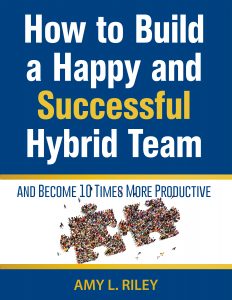
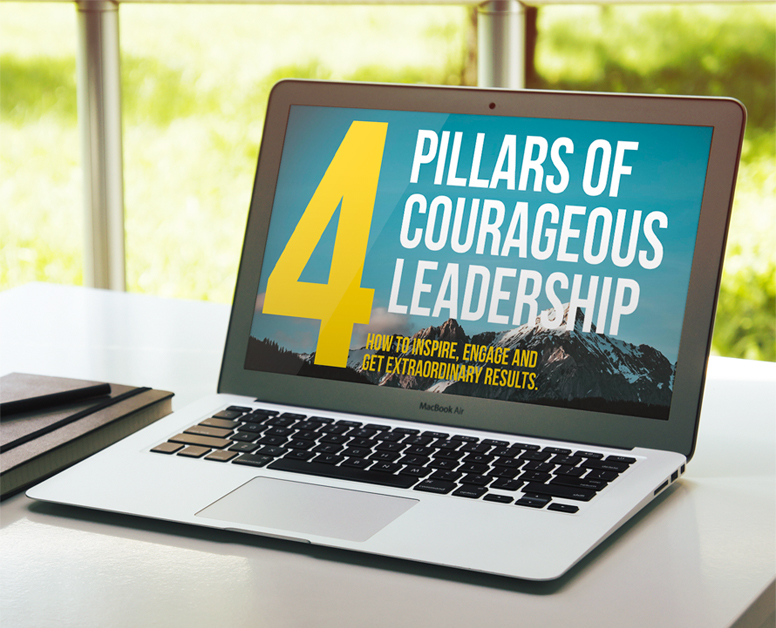 A Summary of The Courage of a Leader® 4 Pillars
A Summary of The Courage of a Leader® 4 Pillars